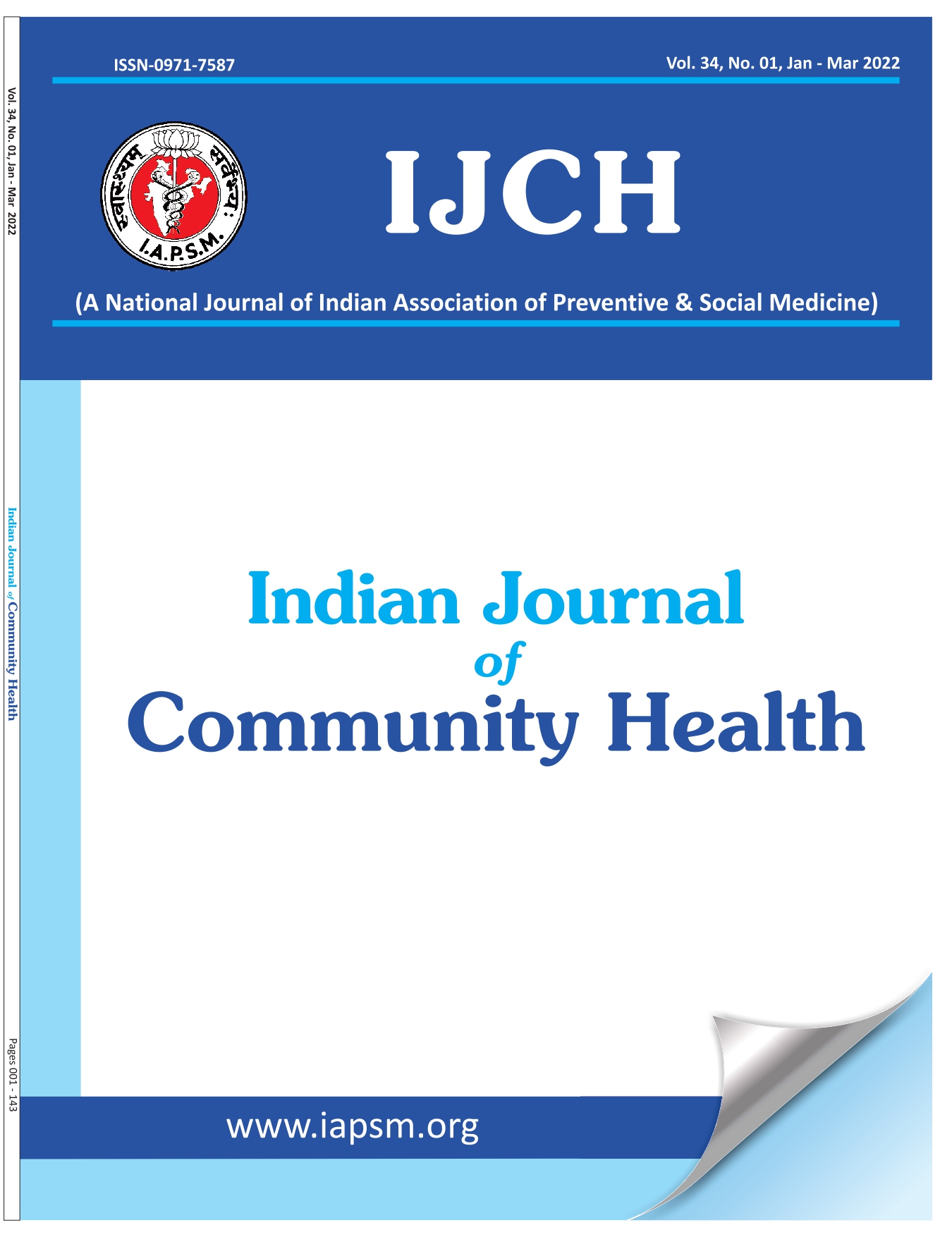Spectacle wear and factors associated with non-compliance among children of 5-15 years
DOI:
https://doi.org/10.47203/IJCH.2020.v32i01.017Keywords:
Spectacle, Compliance, MyopiaAbstract
Introduction: Refractive errors are the commonest cause of visual impairment in school children worldwide. They are correctible and after screening, spectacles can easily enhance vision. This can be achieved only when spectacles are used regularly. Objective: This study was conducted to study the compliance of spectacles wear among children and to determine the reasons associated with non-compliance. Methodology: 400 children in the age group of 5-15 years with refractive errors attending the eye OPD, using spectacles for more than three months were included. Spectacle wear and reasons of noncompliance were enquired. Data was analyzed to determine the factors associated with spectacle wear compliance. Results: Among 232 boys and 168 girls 142 were from rural and 258 from urban areas. 244(61%) children were compliant. Compliance was better in older children and those from urban areas. Children of educated parents and with power more than -1.0 D were more likely to be compliant. Main reason for not wearing spectacles was ‘lost or broken spectacles’ and dislike for spectacle. Conclusion: Counselling of parents, teachers and peers will be an effective step towards improvement of compliance of spectacles use.
Downloads
References
Ishtiaq Anwar, Saman Waqar, Anam Altaf, Compliance of Spectacle Wear Among School Going Children in District Rawalpindi, Pakistan, International Journal of Ophthalmology & Visual Science. Vol. 2, No. 1, 2017, pp. 1-4. doi: 10.11648/j.ijovs.20170201.11
World Health Organization. Universal Eye Health: a global action plan 2014-2019 [Internet]. World Health Organization. 2013. [[cited 2019 Jun 20]]. Available from: http://www.who.int/blindness/AP2014_19_English.pdf?ua=1.
Morgan IG, Ohno-Matsui K, Saw SM. Myopia. Lancet. 2012;379:1739–48
Bhatt NK, Rathi M, Dhull CS, Sachdeva S, Phogat J. Spectacle compliance amongst school children of Rohtak, Haryana, India. Int J Community Med Public Health. 2017;4(3):734-737. doi:10. 18203/2394-6040.ijcmph20170749
World Medical Association Declaration of Helsinki: ethical principles for medical research involving human subjects. J Postgrad Med 2002;48:206
Pavithra MB, Hamsa L, Madhukumar S. Factors associated with spectacle-wear compliance among school children of 7-15 years in South India. Int J Med Public Health. 2014;4:146-50.
Gogate P, Mukhopadhyaya D, Mahadik A, Naduvilath TJ, Sane S, Shinde A, et al. Spectacle compliance amongst rural secondary school children in Pune district, India. Indian J Ophthalmol 2013;61:8-12.
Chawla K, Rovers J. Survey of Patient Opinions on Eyeglasses and Eye Care in Rural and Slum Populations in Chennai. Internet J Epidemiol [Internet]. 2009 Dec 31 [cited 2019 July 3]; 8(2). Available from: http://ispub.com/IJE/8/2/13165.
Congdon NG, Patel N, Esteso P, Chikwembani F, Webber F, Msithini RB, et al. The association between refractive cutoffs for spectacle provision and visual improvement among school-aged children in South Africa. Br J Ophthalmol 2008 ;92:13-8
Khandekar R, Sudhan A, Jain BK, Tripathy R, Singh V. Compliance with spectacle wear and determinants in school students in central India. Asian J Ophthalmol 2008 ;10:174-7.
Downloads
Published
How to Cite
License
Copyright (c) 2020 Indian Journal of Community Health

This work is licensed under a Creative Commons Attribution-NonCommercial-NoDerivatives 4.0 International License.





